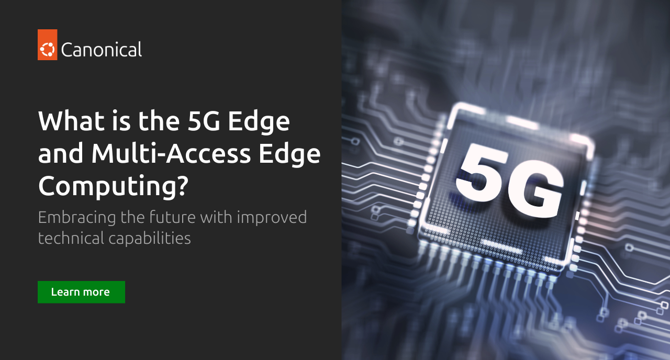Ubuntu
1M
109

Image Credit: Ubuntu
What is the 5G Edge and Multi-Access Edge Computing?
- The deployment of small, distributed data centres and processing units at the edge of the network is known as the 5G Edge. This deployment enhances network performance, brings computing power closer to users, and significantly reduces latency, enabling faster and more efficient network services.
- Multi-Access Edge Computing (MEC) is a complementary technology that brings cloud computing capabilities to the network’s edge. MEC allows for the deployment of applications and services directly at these edge locations, enabling rapid processing of data as it is generated.
- 5G Edge and Multi-access Edge Computing make real-time processing possible, improving existing services and enabling the development of entirely new applications and business models, further driving the evolution of the telecommunications landscape.
- Implementing the 5G Edge and Multi-Access Edge Computing presents telecommunication service providers with numerous technical benefits, from optimised network performance and increased operational efficiency to enhanced security and greater flexibility.
- Optimisation of network performance, increased operational efficiency, and flexibility and customisation are the key benefits for implementing the 5G Edge technology.
- These technologies open up numerous monetisation opportunities, new revenue streams, and increased average revenue per user (ARPU), thereby benefitting customers as well as the telecom companies.
- 5G Edge and Multi-Access Edge Computing enable industries such as automotive, manufacturing and healthcare, to make the most of these advancements, fostering the development of innovative applications.
- Service providers must invest in high-performance computing hardware capable of real-time data processing. Cloud-native computing is crucial, leveraging containerization and microservices for agility and scalability. Network slicing becomes vital, enabling the creation of virtual networks tailored to specific applications, dynamically allocating resources to meet diverse needs.
- The distributed nature of 5G Edge and Multi-Access Edge Computing makes securing edge nodes more crucial than ever. Managing a distributed network of edge nodes requires sophisticated orchestration and management tools which offer visibility and control over the entire network infrastructure, in order to ensure smooth operation.
- Staying informed about evolving regulatory requirements and adapting swiftly to changes is crucial for maintaining compliance and avoiding legal issues, which involves obtaining the necessary licences, adhering to data protection laws, and ensuring interoperability with existing systems.
Read Full Article
6 Likes
For uninterrupted reading, download the app